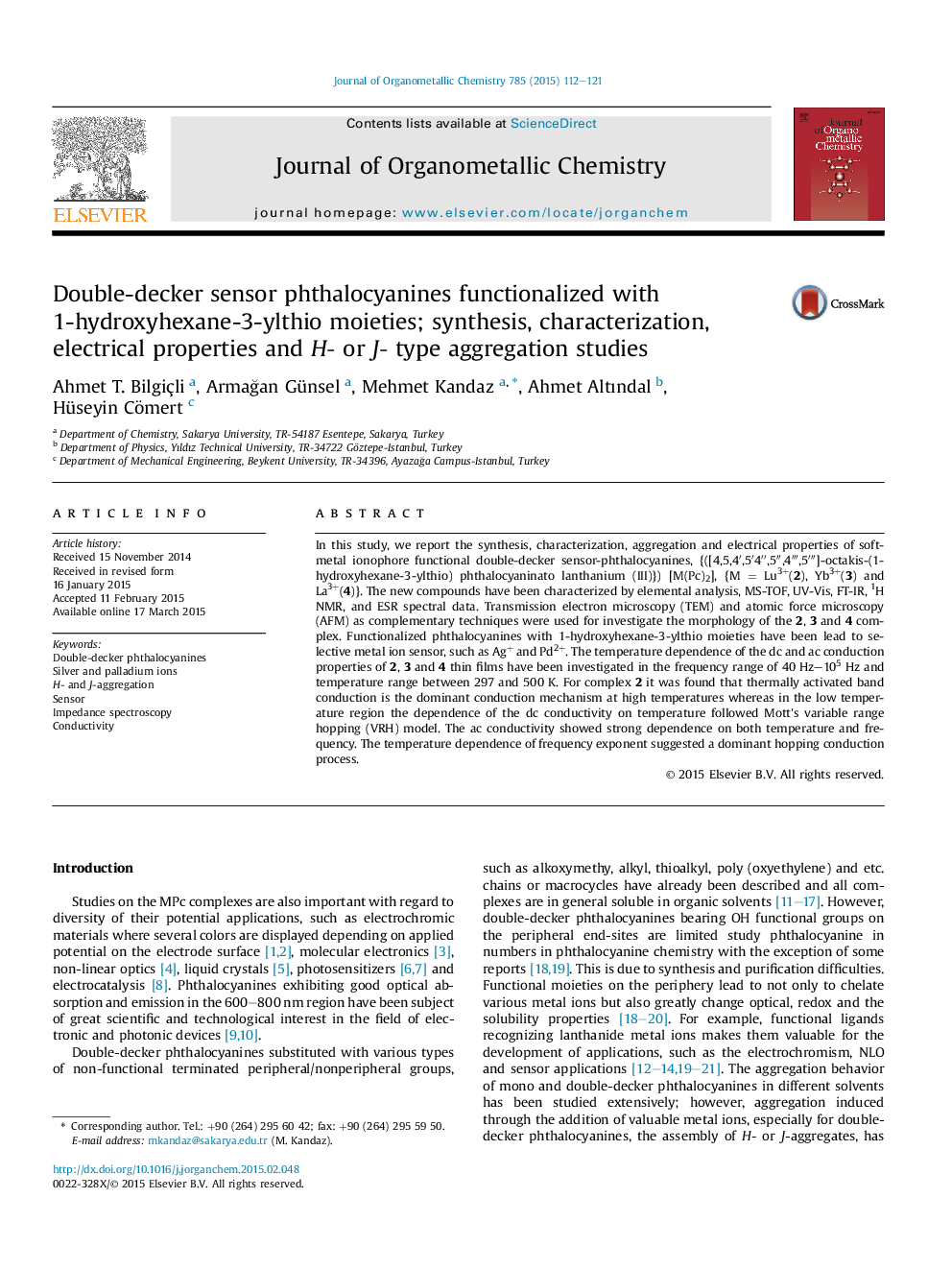| کد مقاله | کد نشریه | سال انتشار | مقاله انگلیسی | نسخه تمام متن |
|---|---|---|---|---|
| 1320995 | 1499857 | 2015 | 10 صفحه PDF | دانلود رایگان |

• Synthesis and characterization of soft-metal ionophore double-decker lanthanide bis-phthalocyanines.
• Elucidation of H- or J-type aggregation studies of functional lanthanide bis phthalocyanines.
• Strong temperature and frequency dependence on ac conductivity.
• The dominant conduction mechanism for ac conduction is the correlated barrier hopping.
In this study, we report the synthesis, characterization, aggregation and electrical properties of soft-metal ionophore functional double-decker sensor-phthalocyanines, {([4,5,4′,5′4″,5″,4‴,5‴]-octakis-(1-hydroxyhexane-3-ylthio) phthalocyaninato lanthanium (III)}) [M(Pc)2], {M = Lu3+(2), Yb3+(3) and La3+(4)}. The new compounds have been characterized by elemental analysis, MS-TOF, UV-Vis, FT-IR, 1H NMR, and ESR spectral data. Transmission electron microscopy (TEM) and atomic force microscopy (AFM) as complementary techniques were used for investigate the morphology of the 2, 3 and 4 complex. Functionalized phthalocyanines with 1-hydroxyhexane-3-ylthio moieties have been lead to selective metal ion sensor, such as Ag+ and Pd2+. The temperature dependence of the dc and ac conduction properties of 2, 3 and 4 thin films have been investigated in the frequency range of 40 Hz–105 Hz and temperature range between 297 and 500 K. For complex 2 it was found that thermally activated band conduction is the dominant conduction mechanism at high temperatures whereas in the low temperature region the dependence of the dc conductivity on temperature followed Mott's variable range hopping (VRH) model. The ac conductivity showed strong dependence on both temperature and frequency. The temperature dependence of frequency exponent suggested a dominant hopping conduction process.
In this study, novel compounds have been characterized by elemental analysis, MS-TOF, UV–Vis, FT-IR and ESR spectral data and also Transmission electron microscopy and atomic force microscopy was used to investigate the morphology The temperature dependence of the dc and ac conduction properties of novel compounds have been investigated.Figure optionsDownload as PowerPoint slide
Journal: Journal of Organometallic Chemistry - Volume 785, 1 June 2015, Pages 112–121